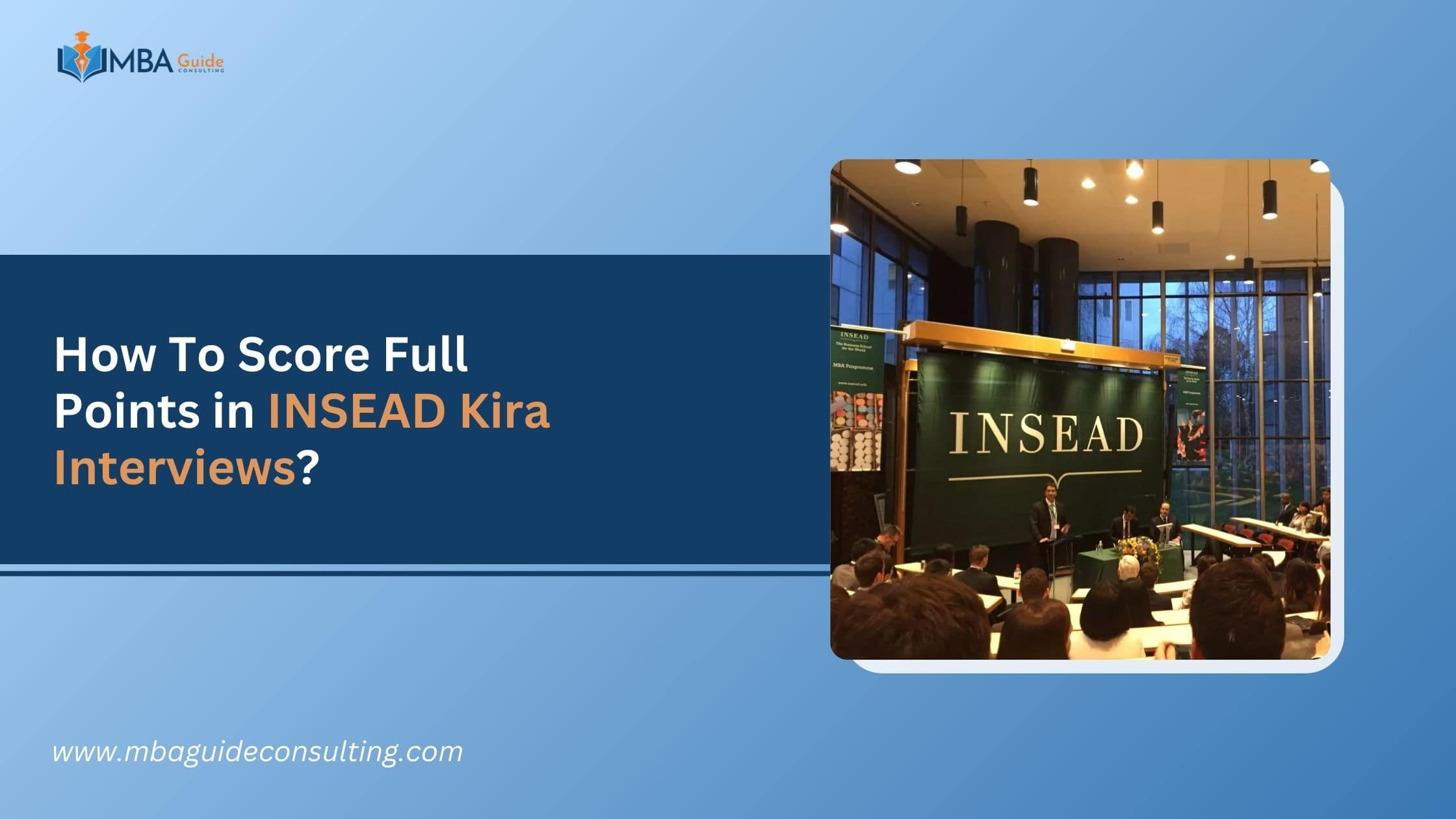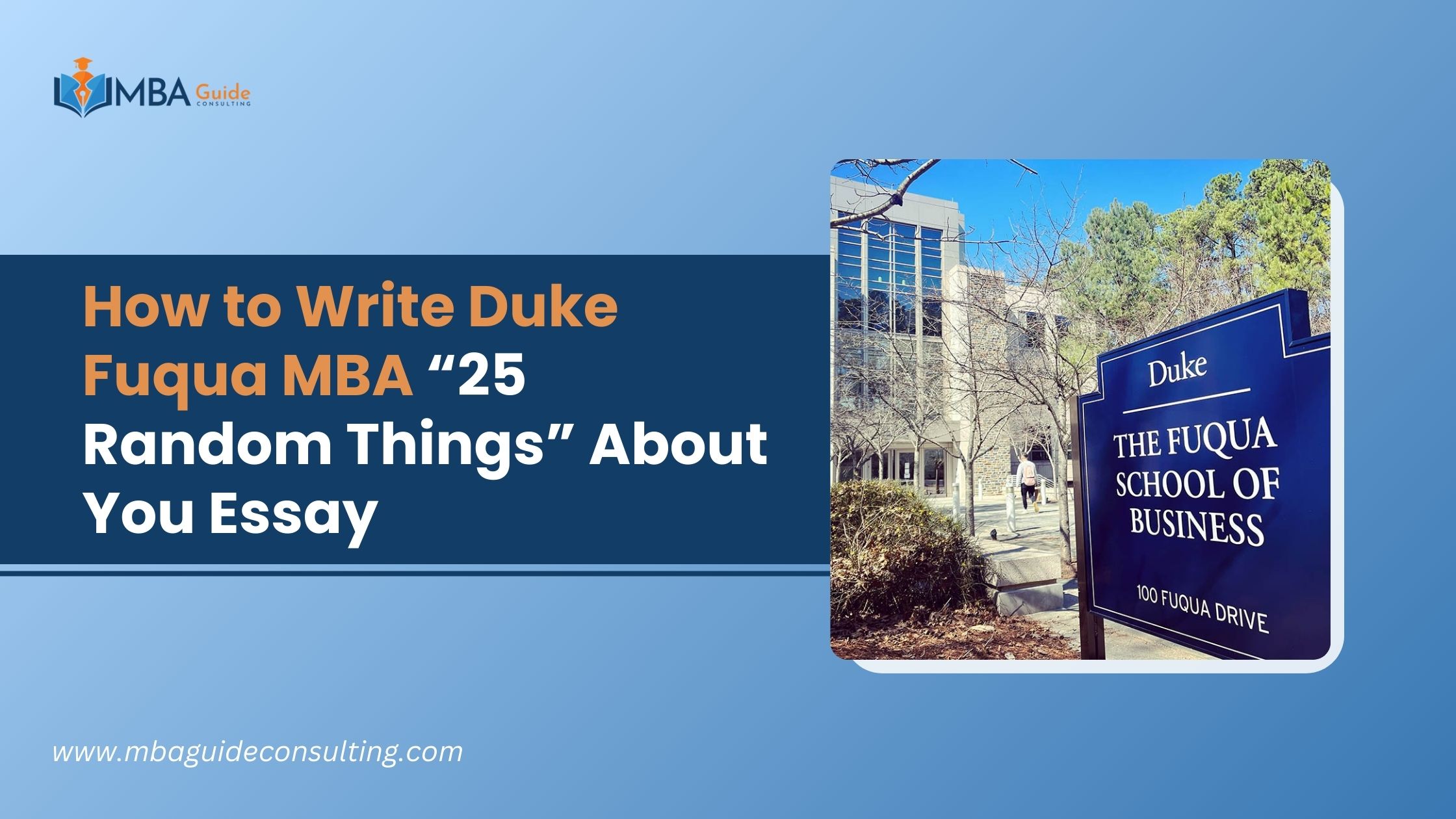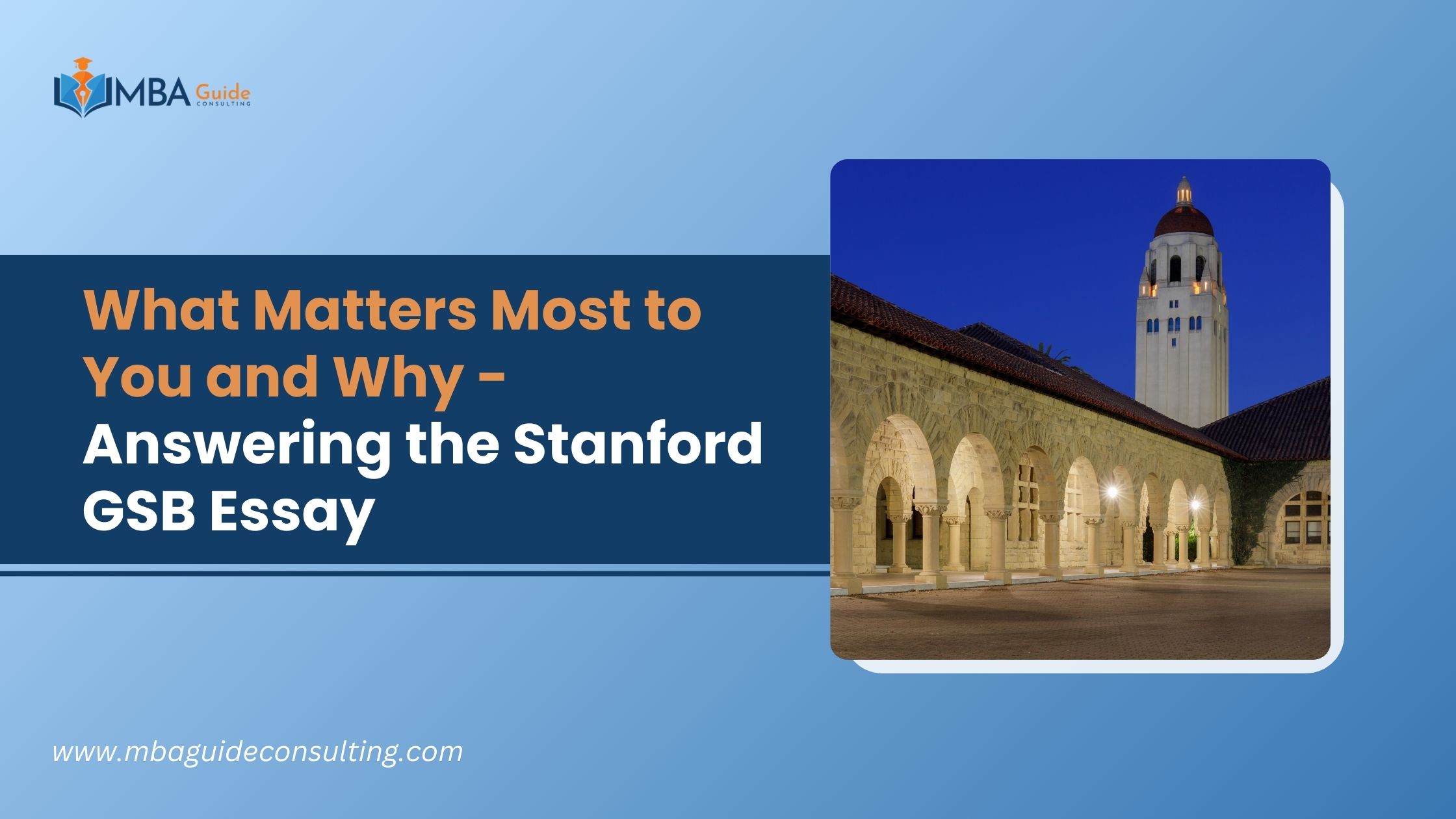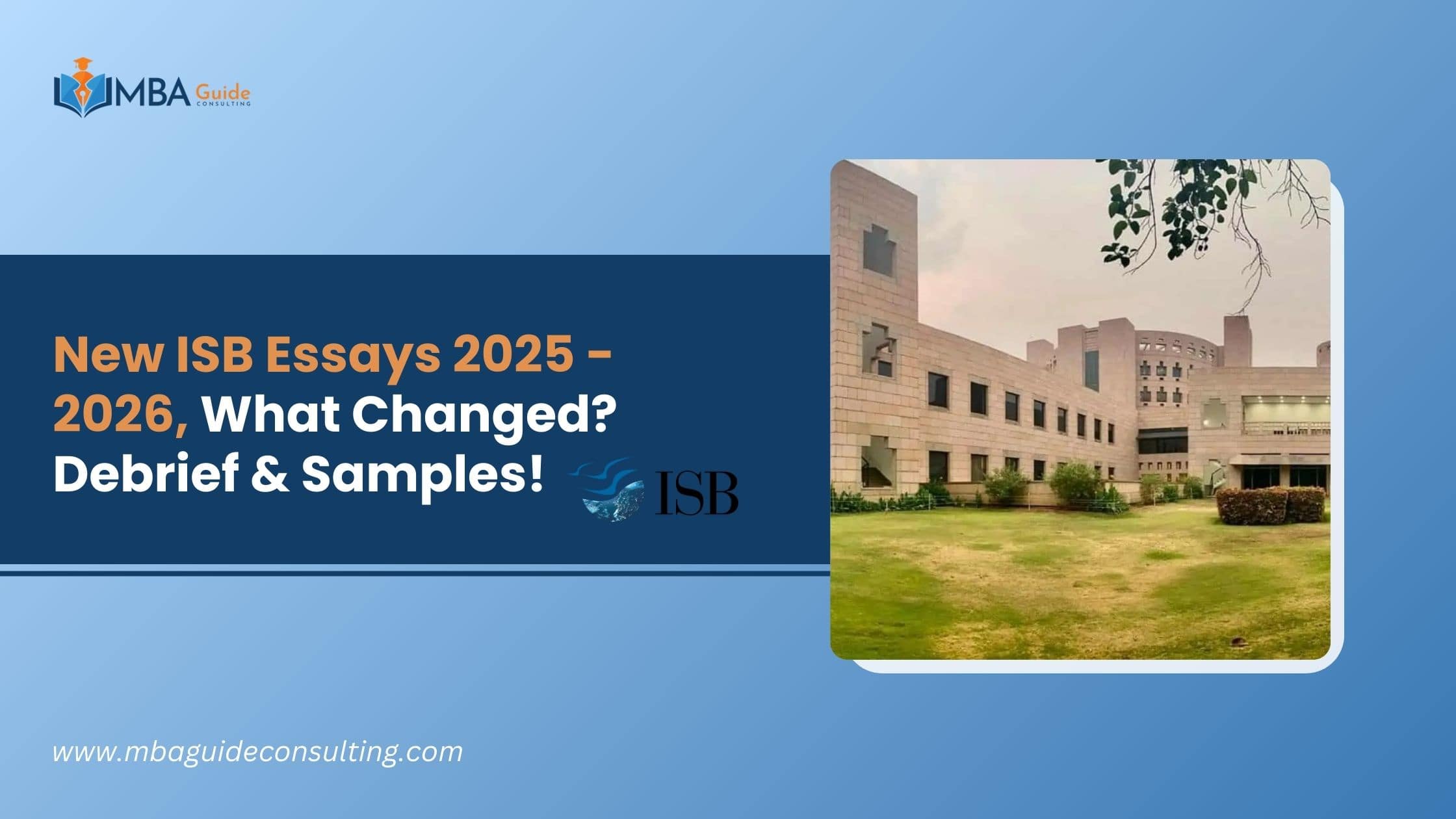How To Score Full Points on Video Essay Questions in INSEAD Kira Interviews?
The INSEAD KIRA interviews are the most fumbled part of the INSEAD MBA application. INSEAD applicants meticulously polish their essays through numerous rounds of review with admissions consultants and mentors. Yet, many overlook adequate preparation for the KIRA section due to the energy consumed by the extensive essay requirements. Consequently, candidates often find themselves with limited time and energy for the video questions. This shortcoming provides an excellent opportunity for AdComs to evaluate who the candidate genuinely is when the superficial polishing of answers is limited. But truth be told, in a program that gets interest from some of the most accomplished professionals, there is little room for being casual and not taking the KIRA seriously. Therefore, do not overdo the “authentic self” part and seem utterly in oblivion while answering the questions.
In this write-up, I will share my top tips and sample answers that can help you get full points from the AdComs on the INSEAD KIRA section.
Overview On INSEAD Kira Interview Questions
KIRA SPECIFICS-
During the INSEAD video interview (which must be taken within 2 days after the deadline you are applying,) applicants have to answer four questions. Each question allows 45 seconds for preparation and 60 seconds for response. Prior to the actual interview, candidates have the chance to practice with sample questions and make multiple attempts until they feel confident.
Most Asked INSEAD Kira Interview Questions
Here are some of the most commonly asked INSEAD Kira interview questions that get asked in varying forms.
1. In the event of team underperformance, how do you plan to address the situation?
2. Is there a particular manager you admire? If so, what qualities inspire your admiration?
3. Could you recount a scenario where you effectively collaborated with someone holding contrasting views?
4. Describe a recent instance where a clash of cultural norms resulted in conflict.
5. From your perspective, what defines success in a professional career?
6. Can you share your understanding of the Insead MBA program?
7. How do you approach providing constructive criticism to a coworker?
8. What strategies do you employ to earn respect as a manager?
9. What goals do you aspire to achieve during your time at Insead?
10. In your opinion, what constitutes unethical leadership behavior
As you can see, the INSEAD application and KIRA questions often revolve around recurring themes such as “ability to work with those who have different values than you,” “cross-cultural communication and knowledge about the INSEAD fit,” “ethics and leadership,” and “clarity on goals and how INSEAD can help.” Prepare for these themes and highlight your authentic points when answering the KIRA questions.
While the exact algorithm for the INSEAD KIRA interview is unknown, we have observed certain patterns in the types of questions applicants receive. For instance, individuals with consulting backgrounds or those targeting consulting as a post-MBA goal often encounter questions focusing on their ability to collaborate effectively with others.
Here’s a comprehensive set of questions recently received by a consulting candidate:
1. What are the challenges that you will have at INSEAD? (gauges the candidate’s ability to get along with other INSEADers and their knowledge about the program)
2. If someone is shy in your team during a meeting, what will you do? (a very targeted question in my opinion. The study groups at INSEAD have complex dynamics because very often the extroverts and consultants overshadow the introverts who may also have high-quality inputs. How you help others progress also counts toward the team score)
3. What is your leadership style? How do you deal with people having different accents or dialects?
As an illustration, let’s consider the case of an applicant with an entrepreneurship background or entrepreneurial aspirations post-MBA.In this scenario, at least one question may be tailored to assess their comprehension of the startup landscape and entrepreneurial journey. Possible questions in the Kira examination could include:
- What do you consider to be the top priorities for a company to focus on?
- If you had unlimited financial resources, which industry would you invest in and why?
- How do you plan to uphold your startup’s overarching vision amidst various challenges?
These questions aim to evaluate the depth of your goal-setting and the authenticity of your aspirations outlined in your essays. Likely, many applicants haven’t anticipated these specific question types in the Kira interview. However, with some foresight into the KIRA process, you can now better prepare yourself for the video interview.
Also Read: INSEAD MBA Essay Writing Tips
Now, let’s delve into a sample question that has been consistently asked in various forms.
What do you know about the Insead MBA?
So, what should you cover?
A. Give background on your networking skills and cite the commonly shared quality of INSEAD MBA.
Applicants must use this opportunity to recall times when they interacted with INSEAD alumni and authenticate their decision to apply to INSEAD. This strategy works well for two reasons-
1. Insead values extraversion and the ability to make connections (very much!)
2. Provide an authentic story to the AdCom about speaking with an alumni.
Tell what you learned from the alumnus you connected with, and how the alum helped you develop a better perspective. You might respond saying for example, “My conversation with Aanchal, a 2019 alumna, reinforced my conviction in the transformative power of the INSEAD MBA. She highlighted how the INSEAD MBA program challenges individuals to step beyond their comfort zones due to its diverse curriculum and the caliber of students who bring invaluable insights during class discussions drawn from their diverse industry backgrounds…”
B. Combine point A with the characteristics of the INSEAD MBA that you value the most.
Many INSEAD applicants are lured by the highly global nature of the program. Others are lured by its ranking and positioning in the consulting industry. IMO its not enough to simply cite any of these and be done. Your answers would seem more authentic and well-researched if you show how well you know about the program and connect those insights with your own motivations.
For example, of the overall management consulting jobs at INSEAD, 44% of the offers were made to new hires or people from nonconsulting backgrounds. If you are from the Technology and Media sector, 46% of the class was able to switch to Management Consulting. Personalizing your answers with these researched stats will help you stand out from the crowd. You may combine your reasons from A and B (global exposure) with your willingness to learn from peers to present a solid basic answer structure as “My conversation with Aanchal, a 2019 alumna, reinforced my belief in the transformative impact of the INSEAD MBA. She highlighted how the program propels individuals beyond their comfort zones, driven by its dynamic curriculum and the caliber of students who bring diverse industry perspectives.
Hailing from India, where diversity is deeply embedded in our cultural fabric, I am sure the INSEAD experience will only amplify this ethos with its globally diverse cohort spanning over 60 nationalities. Engaging with such a varied peer group promises to enrich my perspectives in ways unparalleled by any other MBA program.”
C. NOW Check your watch! If you feel you still have some time left here are some goal-specific points that will further elevate your why INSEAD answer in a Kira interview
1. Do your homework on the stats for career switchers and sound authentic in your KIRA interview,
for example
“My conversation with Aanchal, a 2019 alumna, reinforced my belief in the transformative impact of the INSEAD MBA. She highlighted how the program propels individuals beyond their comfort zones, driven by its dynamic curriculum and the calibre of students who bring diverse industry perspectives.
Hailing from India, where diversity is deeply embedded in our cultural fabric, I am sure the INSEAD experience will only amplify this ethos with its globally diverse cohort spanning over 60 nationalities. Engaging with such a varied peer group promises to enrich my perspectives in ways unparalleled by any other MBA program.
(Career Switch-) With insights gained from researching post-INSEAD recruitment trends, I have developed confidence in my ability to transition from technology to management consulting. The reputation of INSEAD as a premier destination for consulting firms further strengthens my conviction. Considering that nearly half of technology and media candidates at INSEAD successfully pivoted to consulting in 2023, I have started to proactively connect with alumni who have navigated this transition to gain invaluable insights and guidance.”
2. Overcoming Career Stagnation
With an average professional experience of approximately 5.5 years, the INSEAD MBA program boasts a diverse cohort of over 1000 students, with at least 25% possessing over 7 years of experience. Having spent significant time in a particular industry, function, or geographical location, this background serves as a credible catalyst for career transitions. Leverage these insights to enhance the persuasiveness of your responses.
3. Constant learning and leadership opportunities
I have never met a person who said they did not learn anything new at INSEAD. Even for the most qualified and the most educated, INSEAD had some other challenges to offer. Highly qualified management consultants struggled to work in study groups that had people with very different personalities. Introverts struggled to work with extroverts. Finance wizards sailed through the courses, but struggled with networking and communication. Engineers and doctors struggled with the fast-paced curriculum and networking.
Find out what aspects of “constant learning” are you interested in. INSEAD has several clubs as well as exchange opportunities with schools like Wharton, Kellogg, and CEIBS. Even if you do not take up an exchange program, you will still have the opportunity to study with exchange students from Kellogg, Wharton, and CEIBS who spend a substantial time in Singapore and Paris. Personalize your answer even more if you are an Asian student opting for the Fonty campus, or a European opting for the Singapore campus (show your willingness to go out of your comfort zone). In the INSEAD application and interviews, every small detail matters. CREATE your own unique repository for mix-and-match answers.
Some Sample KIRA Interview Questions and Answers (with my own)
Q. How do you deal with people having different accents or dialects?
Ans: Working in 5 countries has helped me to adapt to different dialects and communication styles. Working with the production teams in Thailand and China was particularly challenging as the employees in the factories have relatively little experience with the English language. My ability to listen patiently and encourage local employees to speak more helped me to become more familiar with the local dialects. Interacting with colleagues outside of working hours also helped me build more trust with the teams, which allowed them to open up more during team meetings in the workplace. I also spent 5 years learning French while working in France for a French company, which helped me to communicate better with my French colleagues.
Q. What is your leadership style?
Ans. As a woman in the manufacturing space, I have led teams on shop floors in multiple countries. I would say my leadership style has evolved to focus on teamwork, resilience, and strategic thinking. In the production environment where product launch timelines had to be strictly adhered to, I spent a lot of time troubleshooting production processes and ensuring quality results with teams across the company’s hierarchy. To present my recommendations to the CTOs and R&D heads, I leaned heavily on data and firsthand insights to communicate the challenges and secure additional time for the projects. This strengthened my ability to collaborate at all levels. Furthermore, to motivate my juniors in factories, I spent significant time at the production facility, thus leading by example. However, there have been times when under extreme timeline pressure, I have had to adopt a firmer management style so the team could deliver the output on time.
Q. Describe a recent instance where a clash of cultural norms resulted in conflict.
Ans. When my employer relocated the company’s R&D office from Thailand to India, tensions flared between the new India R&D team and various production facilities in Thailand and China, creating discord that threatened the entire design-to-production cycle. With the backing of my R&D head, I organized a weeklong workshop at our New Delhi headquarters, bringing together key stakeholders from Thailand, China, and India. I facilitated rigorous discussions among all participants to reconcile their differences, culminating in a collaboratively devised action plan that has since been diligently implemented. After this workshop, our relationships with regional Asian factories have significantly improved, propelling the company’s growth to unprecedented heights in Asia.
Q. From your perspective, what defines success in a professional career?
Ans. To me success is achieving specific career milestones, making a positive impact in my field, and attaining a certain level of recognition or influence. At the same time, I also feel that success must not be solely defined by career accomplishments but also by maintaining a fulfilling and enriching personal life. I would feel successful if I am able to align my professional pursuits with my values, passions, and sense of purpose. Success, for me, is pursuing work that is meaningful and fulfilling on a deeper level.
Q. How do you approach providing constructive criticism to a coworker?
Ans. When I started my job in the US, I was heavily influenced by the learning I received from a mentor about respecting the internal clock of self-realization and politeness in American culture. My mentor introduced me to the sandwich method of constructive feedback, which I have followed ever since as a manager. In this approach, I start by highlighting something positive about the person’s work or behavior. This creates a supportive and encouraging tone that makes the recipient more receptive to my feedback. After the initial positive comment, I offer specific feedback on areas for improvement. I make suggestions for improvement and, if possible, give examples. At the end of the feedback session, I reinforce the person’s strengths and acknowledge the progress they have made. This helps to boost self-confidence and motivation so that the person feels encouraged and not discouraged.
Get personalized MBA Consulting advice tailored to your specific situation. Reach out should you need help navigating your unique circumstances in the B School admissions process. We do not cap discussion hours.




